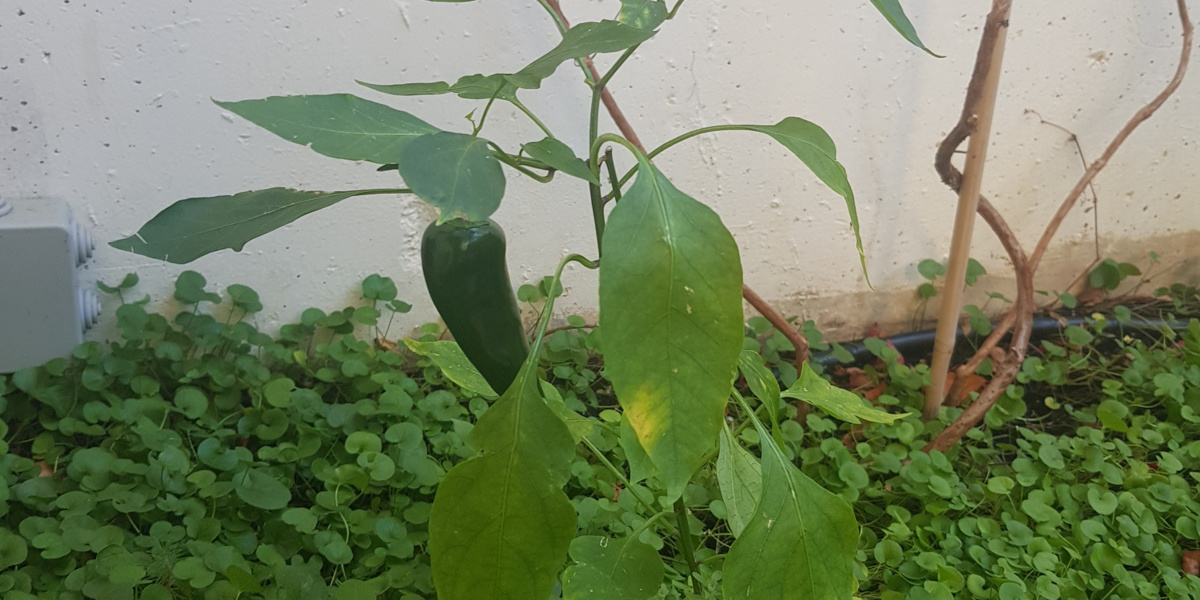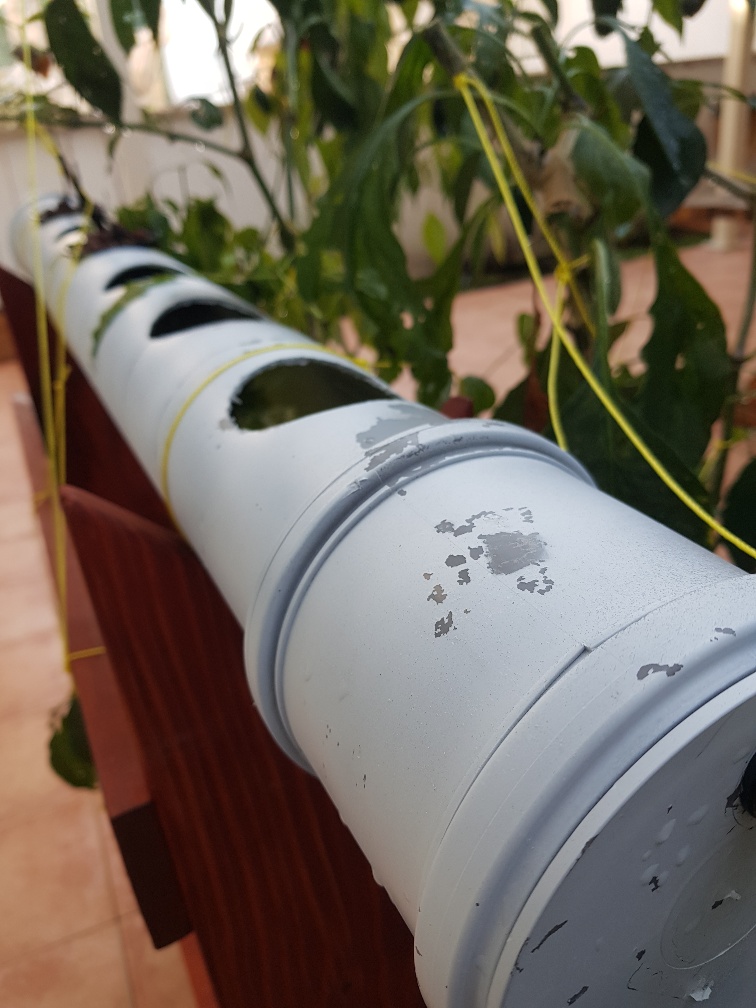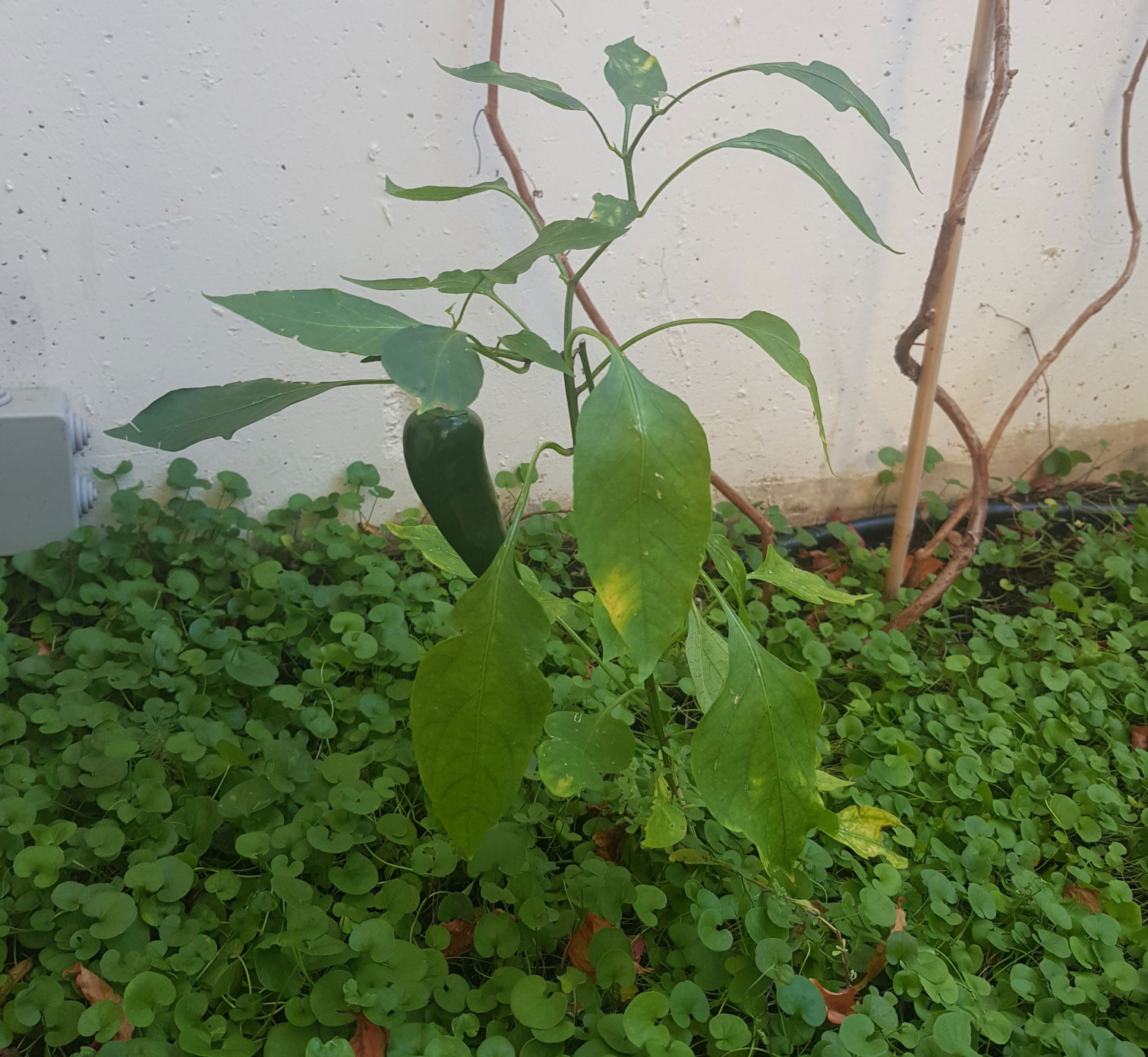
Don’t have a hydroponic garden yet? Start building one!
Josip Sobin from Jantar - IH Split explains how to easily build a hydroponic garden.
You don’t have to dig deep in order to find information about the environmental benefits of hydroponic growing. A simple Google search will yield an array of articles, ranging from scientific papers to “Five environmental benefits” type blogs. Therefore, I am not going to be redundant by talking about the specific environmental benefits of hydroponics, essentially because I think most of them are obvious (the first one being: you are producing plants!!!). Instead, I am going to tell you about how I got into hydroponics, my experience of building a good system, what I use it for, etc.

The inevitable intro: hydroponics 101
Still, I would feel foolish if I didn’t at least give a brief overview of what hydroponics is about. Again, you can Google most of these things fairly quickly, but to put it the simplest possible way: hydroponic gardening is a method of growing plants in water, without using any soil. There are many benefits with this particular approach, but for now you should simply know that growing plants in water is lot more efficient than growing them in soil.
Yes, yes, I know – you don’t really believe me. I mean, your entire life you’ve been told that plants grow in soil and that they use their roots to pull out all these minerals and beneficial compounds from the soil itself. Well, soil is simply a medium and all the good stuff is actually dissolved in water. Therefore, you can grow things in water, as long as your water contains the good stuff. Obviously, you will need liquid fertilizers to enrich your water with all the nutrients your plants require, but we’ll get there.

Why should I grow things in a hydroponic garden?
Because it’s fun! It is as simple as that. Every part of it is fun: building your system, seeding your plants, growing them, pruning them, picking the fruits of your labor… Gardening itself is fun, no one can deny that. Think of this simply as a new way of gardening, one that you can actually fit in your bedroom if you want to.
Also, hydroponic garden will usually yield much better results. Just compare my hydroponic-grown jalapenos (image 1) to my soil-grown ones (image 2). These plants are grown on the same terrace and exposed to the same conditions throughout their growing cycle. Yet one is obviously thriving, while the other is struggling in the acidic soil of a Croatian island.

Building up the hydroponic system
There are several types of systems, differing mostly in their complexity. It can be as simple as putting a rooted plant in a glass of water with some minerals in it; sometimes even adding plain sugar into the water yields results. These stationary water gardens are popular due to their simplicity, but I don’t really like them – if nothing else, stationary water easily becomes a breeding ground for mosquitos.
I built a Nutrient Film Technology system. It takes a bit of work, but it is quite fun to do. The premise is that you need a water tank full of nutrient-rich water and a pump that shoots this water up to the top of your system. Then you slowly cascade this water back down to the tank through a set of pipes. You place your plants inside these tubes, so that nutrient-rich water keeps circulating through their roots as it flows back down into the water tank.
Here are some tips in building such a system:
- Rack (image 3)
You need some sort of a rack that will hold your tubes. You can build one any way you like, but I used wooden planks to build mine. All you need is a saw, some screws and possibly some environmentally friendly paint to give it a finishing touch. You can usually find old wooden planks sitting around somewhere, so why not put them to good use?
- Tubing system (image 4)
I used plastic plumbing pipes obtained from a plastic waste depot (recycling things is always another great way to contribute towards environmental sustainability). I found three of them that were 100 mm in diameter and closed them with some plumbing lids I found at a local DIY store.
Connecting them together was a bit tricky. Again, I recycled an old hose for this purpose, but exit valves presented a bit of a challenge. Basically, where the hose exits your top pipe, you want a good seal to avoid dripping and loss of water/nutrients. I ended up using brass valves normally used for self-drainage systems on boats (which I bought at local marine store) which worked quite well.
- Tank
Again, why not recycle an old plastic container? As long as it can hold water without leaking, it will work just fine.
- Pump
There are many water pumps available for a whole range of purposes. I bought a cheap water pump with a flow of 900 litres per hour at a local hardware store and it’s been working really well for me. Connect your water pump to a solar panel operated battery to get extra points for environmental protection.
- Nutrients
This really is up to you, but I recommend using organic, environmentally friendly designated hydroponic nutrients. My preference lies with General Hydroponics Flora Grow Series. They produce their fertilizers in facilities that use alternative energy sources and green technologies to save water and power, and will therefore always have my vote.
What to grow?
Well, pretty much anything you want (although some plants thrive more than others in a hydroponic garden). Using your produce is the end game in this story – this is where the entire process goes from being fun to being really rewarding. I like to grow chilly peppers, especially jalapenos. They do really well in hydroponic systems, and I use them a lot. My hydroponic garden gives me great pepper yields – enough to make hot oil, pickled peppers and my personal favorite: smoky hot sauce (image 5). I make mine by fermenting peppers, garlic and ginger (image 6) for at least three months. But my secret recipe is a topic for another environmental story J.
Note to language schools: hydroponic garden is a great way to offset your carbon footprint. At the same time, it is a fun project that you can do together with your students and can be built to fit school premises.






















